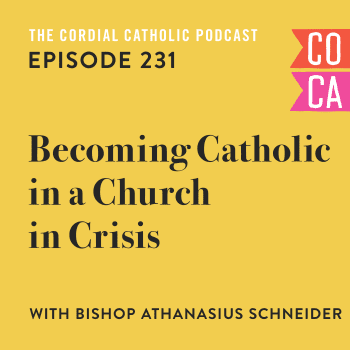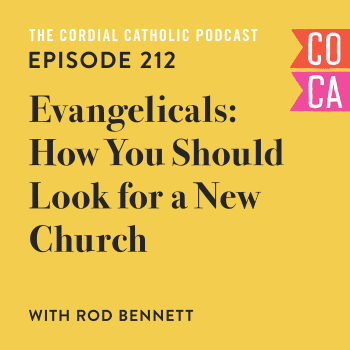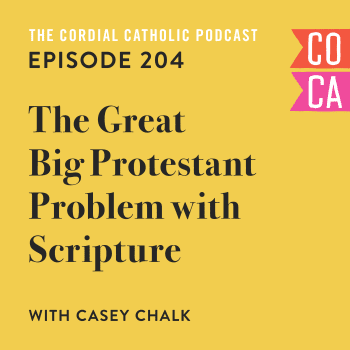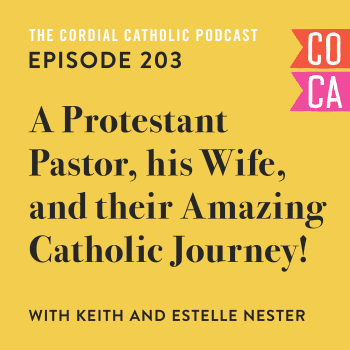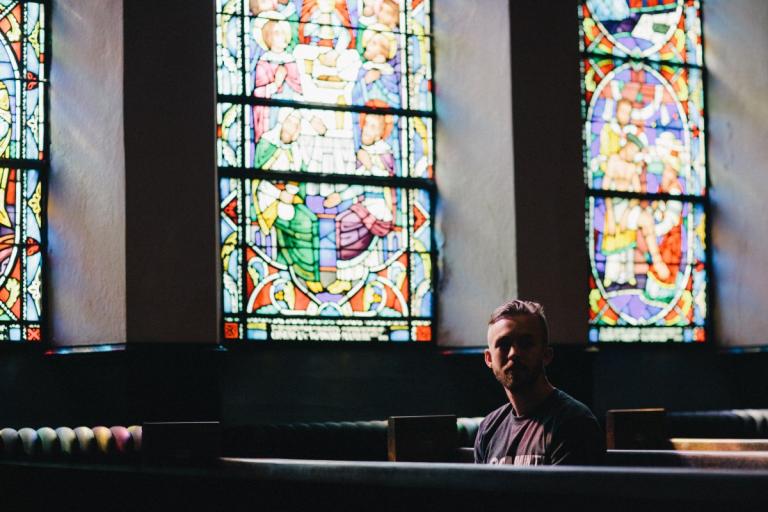
This article is part of the Tough Questions series. A series highlighting some of the difficult questions I was asking during my conversion from a non-denominational Christian to full communion with the Catholic Church. For more about my own conversion story, read What I Wish I Knew About Catholics (And Why I’m Becoming One).
As a non-denominational Christian I had a love-hate relationship with Matthew 18:15-17.
In context, Jesus is talking to his disciples—teaching—and brings up the issue of disagreement amongst believers. The teaching itself is very fascinating. Contrasted with the famous “eye for an eye; tooth for a tooth” law which God gave to the Israelites (Deut. 19:15-21) Jesus’s version of how to handle an argument within the Church is a beautiful glimpse into how the fulfilment of the Old Covenant, and the ushering in of the New, came on the wings of mercy, grace, and compassion.
It’s a profound juxtaposition. But as a non-denominational Christian what struck me every time wasn’t necessarily Jesus’s mercy but the order—His plan or framework—for what we do when we disagree. Matthew 18:15-17 says,
If your brother sins against you, go and confront him privately. If he listens to you, you have won your brother over. But if he will not listen, take one or two others along, so that ‘every matter may be established by the testimony of two or three witnesses.’ If he refuses to listen to them, tell it to the church. And if he refuses to listen even to the church, regard him as you would a pagan or a tax collector.
A clear hierarchy, drawn from Deuteronomy 19, exists here. If you and another Christian disagree,
- Privately confront your brother
- If he won’t listen, bring one of two others along
- If he still won’t listen, tell it to the church
- If he still refuses to listen, treat them as you would a pagan or tax collector
Of course, the beauty and compassion of Christ’s New Covenant is that Christ came to minister to the pagans and tax collectors. His simple message was: has your brother wronged you? Treat him like the people I came to save. It’s a brilliant turn of logic, and flips the law of the Old Testament on its head.
But that wasn’t what got my goat.
It was Step #3, every single time.
See, every time I read Matthew 18 I hit this stumbling block. What did Jesus mean by “the Church”?
I remember, early on in my journey towards Catholicism, meeting with my pastor to discuss some things I was thinking about. We sat across from each other, sharing a pizza and pops, and he said to me, “What’s the biggest thing on your mind right now? What’s convincing you the most to continue to pursue being Catholic?”
I had known this particular pastor for a long time. My wife and I had met in his church; he had married us. We’d been involved in nearly every faucet of ministry from small group leadership to missions outreach to helping to run a quarterly married couples’ night. We were friends, and he was genuinely interested.
I brought up this account from Scripture.
“Say you and I disagree on some point of doctrine,” I said. “If we can’t agree, even to the point of arguing verse for verse from the Bible, then Jesus says we’re supposed to bring in some help.”
“Yep,” he said. “There are plenty of aspect of Jesus’s teaching or matters of faith that we might disagree on. Bringing in some outside help, another pair of eyes, is helpful.”
“So,” I said, “we bring in one or two or three more people from our church to help discuss the problem. Maybe we bring in the elders of the church and we try really hard to find consensus but we still can’t.”
“That’s when we bring it to the whole church,” he said. “That’s what Jesus tells us to do.”
“But what church?” I asked.
And herein lies the problem: the system is broken.
Because if I have a problem with my non-denominational church’s teaching on Christian marriage, salvation, baptism, or the gifts of the Holy Spirit and I work through Jesus’ recommended problem-solving steps 1, 2, and 3 what happens if I still don’t agree?
Well, simple, I go to the church down the street.
I leave.
If I can’t, or don’t, agree with the peers in my church and their teaching I can simply take my proverbial ball and go play somewhere else—and there are lots of others options. The “church” that Jesus is talking about, then, would seem to have no authority over me at all. If you don’t agree with me, I can simply find somewhere else to worship that does.
The tough question I found myself asking, and I asked of my pastor back then, was what could Jesus have possibly meant by “the church”?
It’s clear, from even the most basic thought experiment, that it can’t be the non-denominational churches we see today. These churches are often spawned by disagreement; if we can’t agree we simply make a new church. So what did Jesus mean?
My search—spoiler alert—led me into the open arms of the Catholic Church. A Church which claims to be the church that Jesus was talking about. A church which traces its origins back to the very same disciples that Jesus was talking to, of whom He told, in His very next breath that, “whatever you bind on earth will be bound in heaven, and whatever you loose on earth will be loosed in heaven.” (Matt. 18:18)
A statement which the Catholic Church takes seriously; a God-given authority passed down through time and history to arbitrate matters of Christian faith.
As a non-denominational Christian I couldn’t answer the tough question of which Church Jesus was talking about. I couldn’t figure out why Christians couldn’t agree, even on matters of fundamental importance. It was because the system was broken. The church Jesus asked us to appeal to, in my world, didn’t exist and if we disagreed I could simply move on down the street and worship somewhere else on a Sunday morning.
But this was never how it was meant to be.
Instead, I came to believe that what Jesus must’ve meant was a church that had the authority and universality to decisively settle disagreements. A church which didn’t just start up in the gymnasium of a local school because a group of Christians disagreed with another church down the street. But, rather, a church which was everywhere with clear, concise, and historical links back to those very same disciples Christ was speaking to two-thousand years ago.



